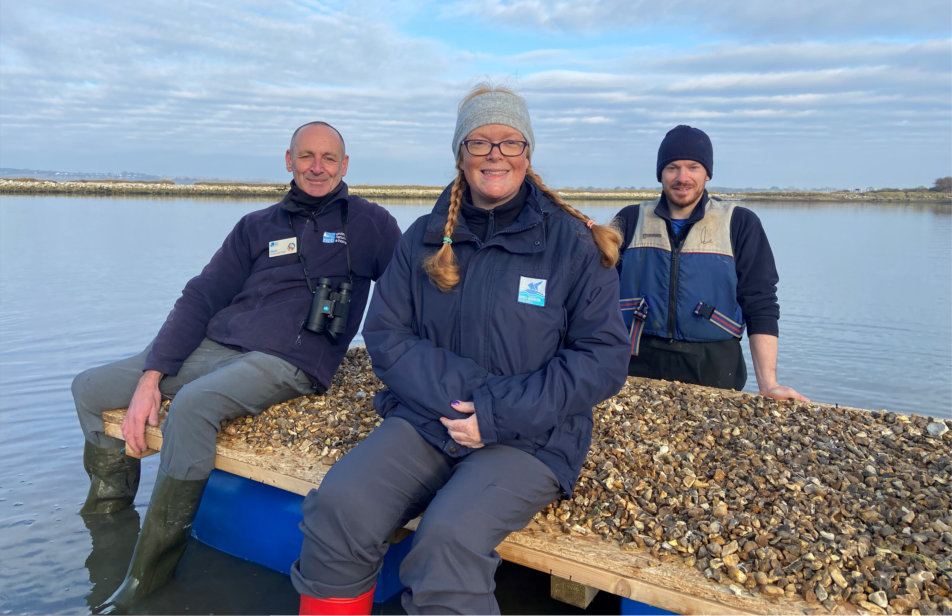
A specially developed raft to help the Solent’s birds breed and rest in safety was installed in November at the West Hayling Local Nature Reserve.
RSPB and Bird Aware Solent worked together on this important project to put in place a specially adapted ‘tern raft’ with a shingle floor at the old oyster beds by the Hayling Billy Line. Rafts like this one have been used at the site very successfully during previous summers to provide habitat for breeding terns.
It is hoped that the raft, which will be out over winter, will also provide a safe resting place for roosting birds such as Turnstones and Redshank during the colder months.
The Solent coastline is of world-wide importance for birds and it’s vital for us to give them the space they need to rest and breed without being disturbed.
The area is important to birds partly because of its plentiful supply of shingle beaches and islands. These make ideal nesting spots for birds in the summer months and a great place for birds to rest at high tide during the winter.
However, the natural shingle areas are being squeezed by rising sea levels: in some years tidal surges have risen above natural shingle islands, flooding birds’ nests. Recently, Bird Aware rangers have visited the site at high tide to find no shingle available for wintering birds to rest on at all.
Artificial islands, like the ones installed by the RSPB and Bird Aware Solent, have proved a valuable way of providing shingle habitats in areas with changing water levels. They help birds thrive by providing them with secure spaces protected from flooding, disturbance from people, and threats from predators like foxes.
The ability to remove and install tern rafts at specific weeks during bird breeding season allows conservationists to provide space for birds who breed later in the spring, when much of the natural shingle spaces are already in use by early breeders.
During the winter vast numbers of wading birds, including dunlin, oystercatchers and godwits can be seen around Langstone harbour, the raft will provide a safe place for some of these species to rest and recover from their long migrations from Arctic regions.
From May, Terns that have ventured here all the way from Africa will hopefully find the new raft on which they will raise the next generation of migratory seabirds.
This is the first known attempt to use a ‘tern raft’ as a high tide resting area for birds during the winter months and both organisations involved are excited to see if the birds will show interest during the first winter season. With sea levels set to rise and large tidal surges becoming more frequent with changing weather patterns, finding solutions for birds facing the effects of climate change is a priority for conservationists around the world.
The area was farmed for oysters from 1819 right up until the 1970s. The oyster beds were restored by Havant Borough Council creating a wildlife haven which has become an important seabird breeding site.
For more information, please visit the Bird Aware Solent website.